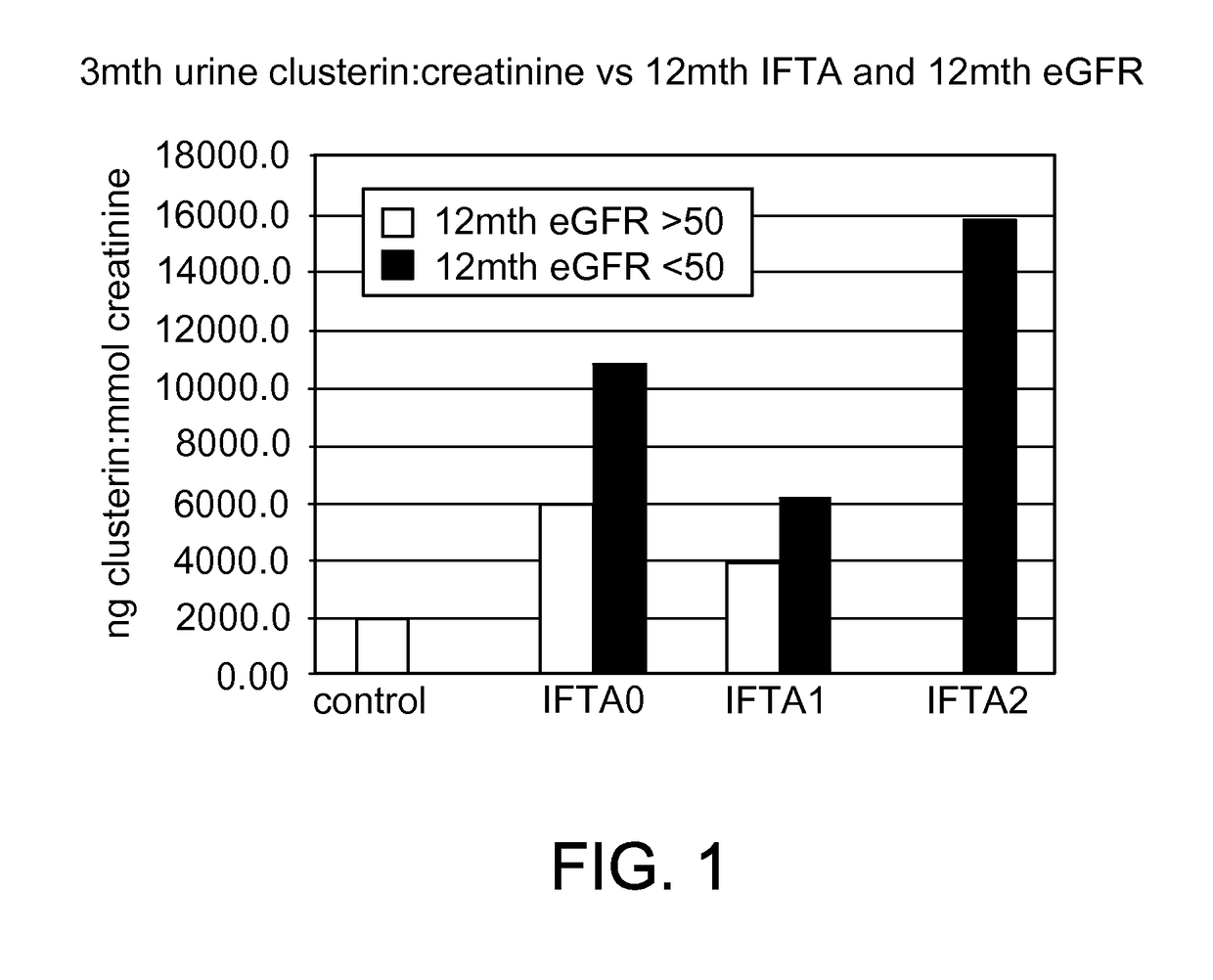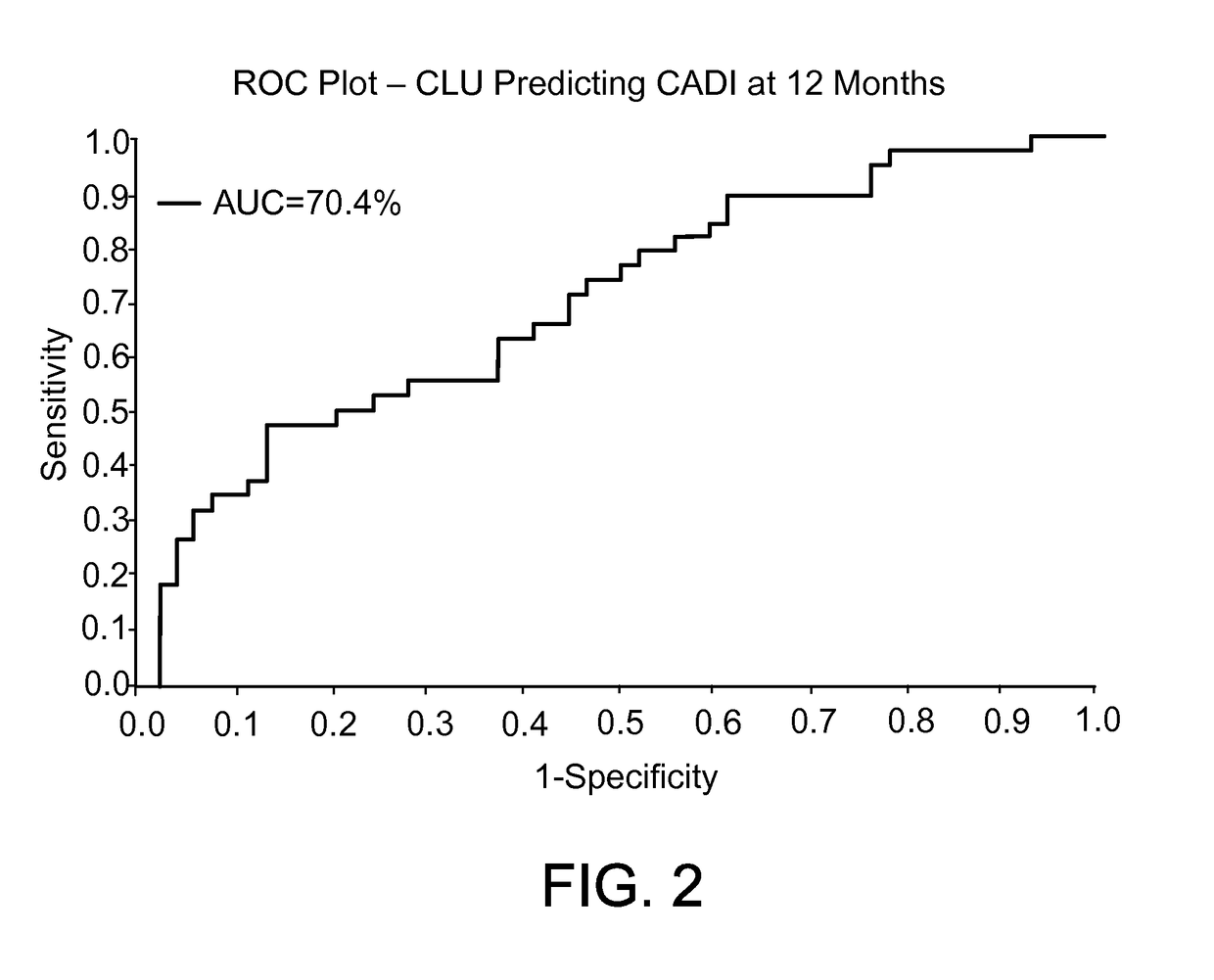Method for predicting risk of exposure to interstitial fibrosis and tubular atrophy with clusterin
a clustering and risk prediction technology, applied in the field of clustering and risk prediction of interstitial fibrosis and tubular atrophy, can solve the problems of graft failure, many contradictions in data, etc., and achieve the effect of increasing the risk of developing
- Summary
- Abstract
- Description
- Claims
- Application Information
AI Technical Summary
Problems solved by technology
Method used
Image
Examples
example 1
[0034]Clusterin was observed to be highly associated with the development of fibrosis and the decline of renal function at the 12-month time point. Expression of Clusterin in the biopsy was not associated with fibrosis at the time of the 3-month biopsy but was associated with eGFR.
[0035]Clusterin was then measured in the urine. Soluble concentrations of Clusterin in the patient's urine were assayed using a commercially available sandwich ELISA kit (Human Clusterin immunoassay, DCLUOO, R&D systems, UK) according to the manufacturer's instructions. All urine samples were prepared at a 4-fold dilution and were run in duplicate. After the development of the colorimetric reaction, the OD at 450 nm was quantified by an eight-channel spectrophotometer, and the OD readings were converted to nanograms per milliliter (ng / ml) on the basis of the standard curves obtained with human Clusterin standard preparations. Clusterin concentrations were represented as “mean±SD”.
[0036]The assay was done i...
PUM
| Property | Measurement | Unit |
|---|---|---|
| area | aaaaa | aaaaa |
| diameter | aaaaa | aaaaa |
| concentrations | aaaaa | aaaaa |
Abstract
Description
Claims
Application Information
 Login to View More
Login to View More - R&D
- Intellectual Property
- Life Sciences
- Materials
- Tech Scout
- Unparalleled Data Quality
- Higher Quality Content
- 60% Fewer Hallucinations
Browse by: Latest US Patents, China's latest patents, Technical Efficacy Thesaurus, Application Domain, Technology Topic, Popular Technical Reports.
© 2025 PatSnap. All rights reserved.Legal|Privacy policy|Modern Slavery Act Transparency Statement|Sitemap|About US| Contact US: help@patsnap.com



